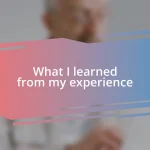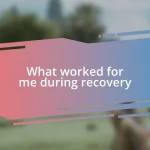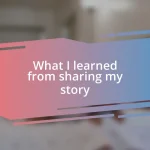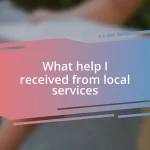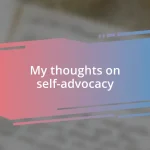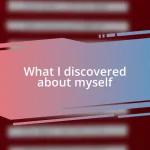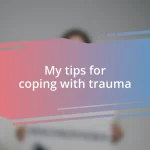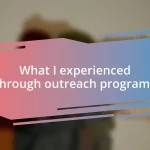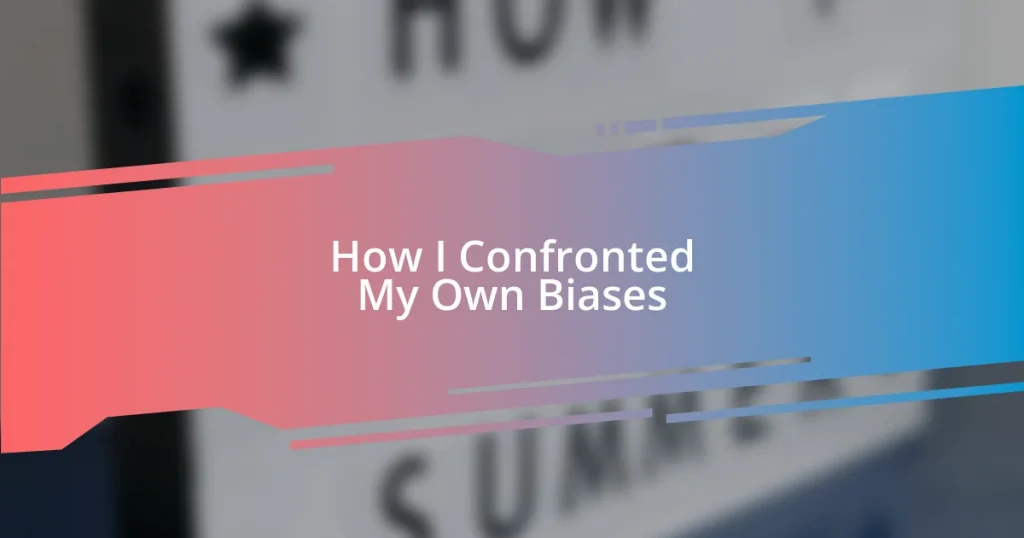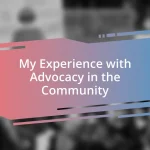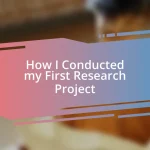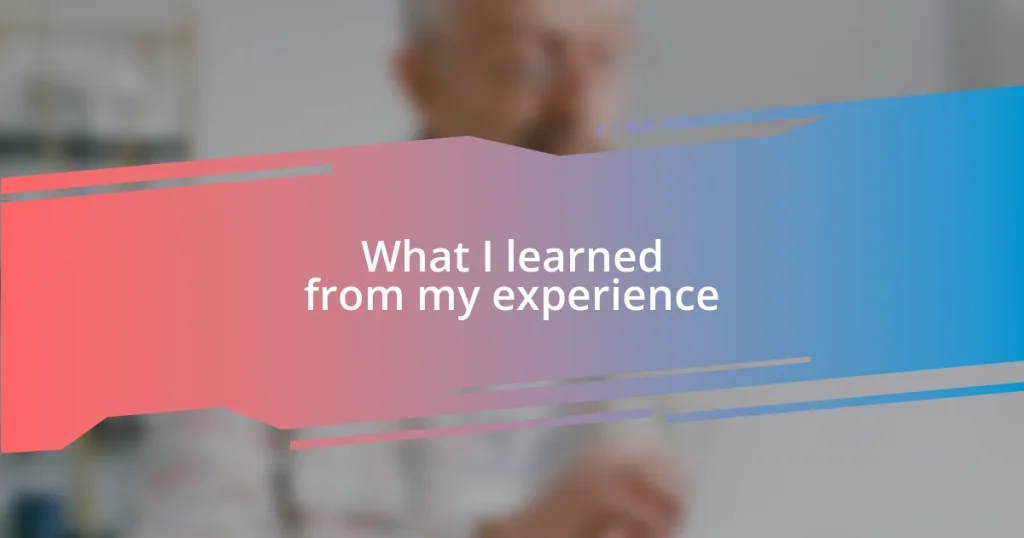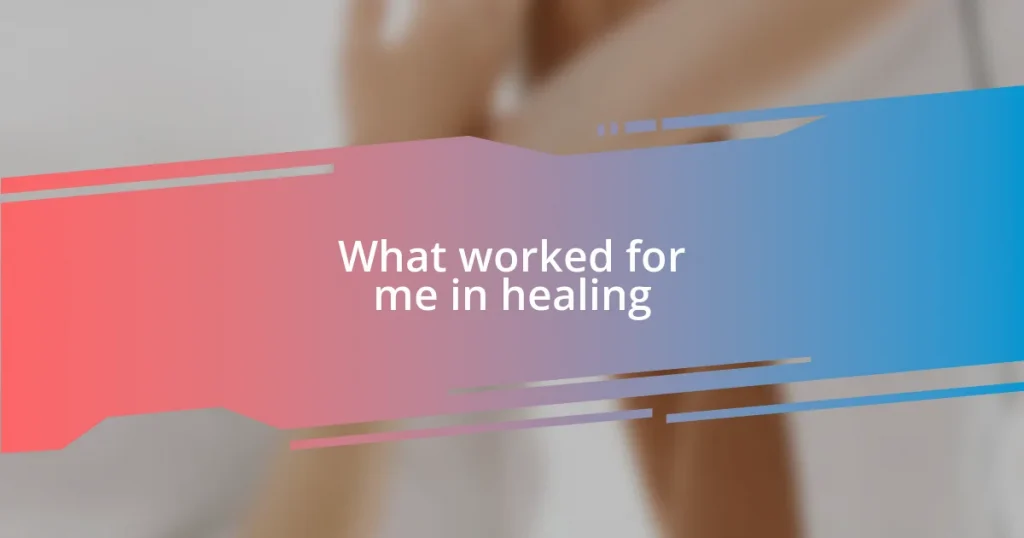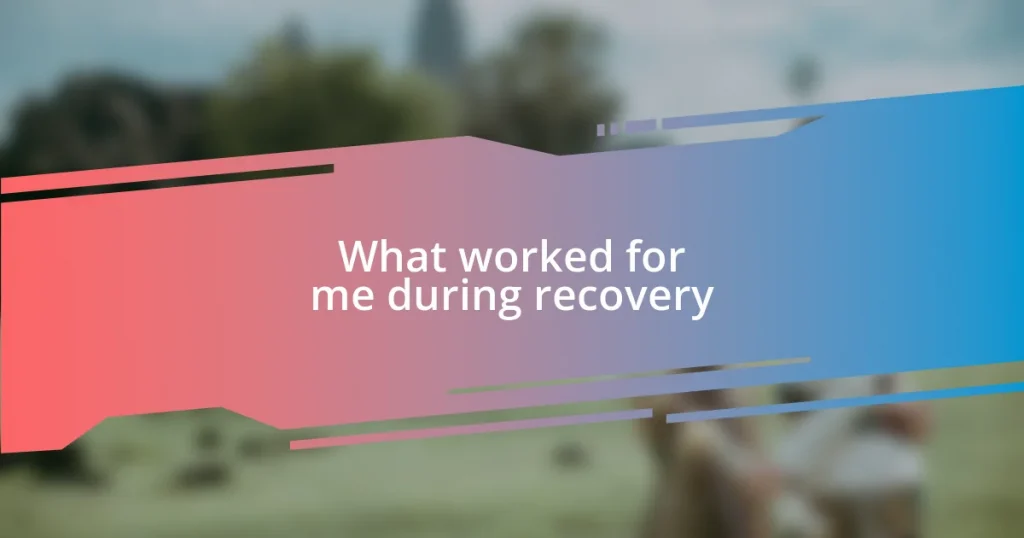Key takeaways:
- Recognizing personal biases involves self-reflection and confronting underlying assumptions that stem from stereotypes and societal narratives.
- Engaging in open conversations and seeking diverse perspectives fosters empathy, broadens understanding, and helps confront discomfort in discussions.
- Measuring progress through journaling and seeking feedback from others provides accountability and highlights growth in confronting biases over time.
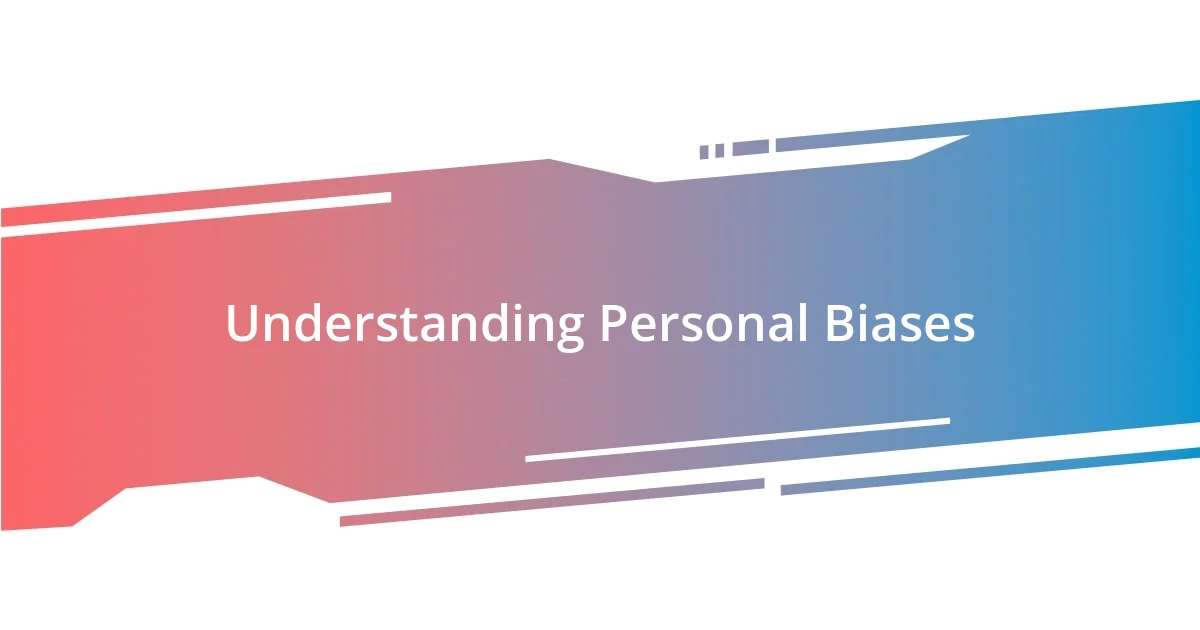
Understanding Personal Biases
When I first started exploring my own biases, I was taken aback by how deeply ingrained they were in my everyday thoughts. It’s almost like we wear tinted glasses that obscure our view of the world. Have you ever paused to consider how your upbringing or cultural background shapes your perceptions of others?
There was a moment when I realized that my initial judgments about people often stemmed from stereotypes I didn’t consciously acknowledge. I remember meeting someone from a different background, and my inner voice whispered assumptions that I’d never voiced. That realization tugged at my heart; it made me question how often I let unfounded ideas dictate my feelings about others.
Understanding personal biases is a journey—a continuous process of self-reflection. I often find myself asking, “What am I truly afraid of?” This question helps me peel back layers of assumptions, allowing me to approach situations with an open heart and mind. Embracing vulnerability in this way not only enriches my relationships but also broadens my perspective on human experiences.
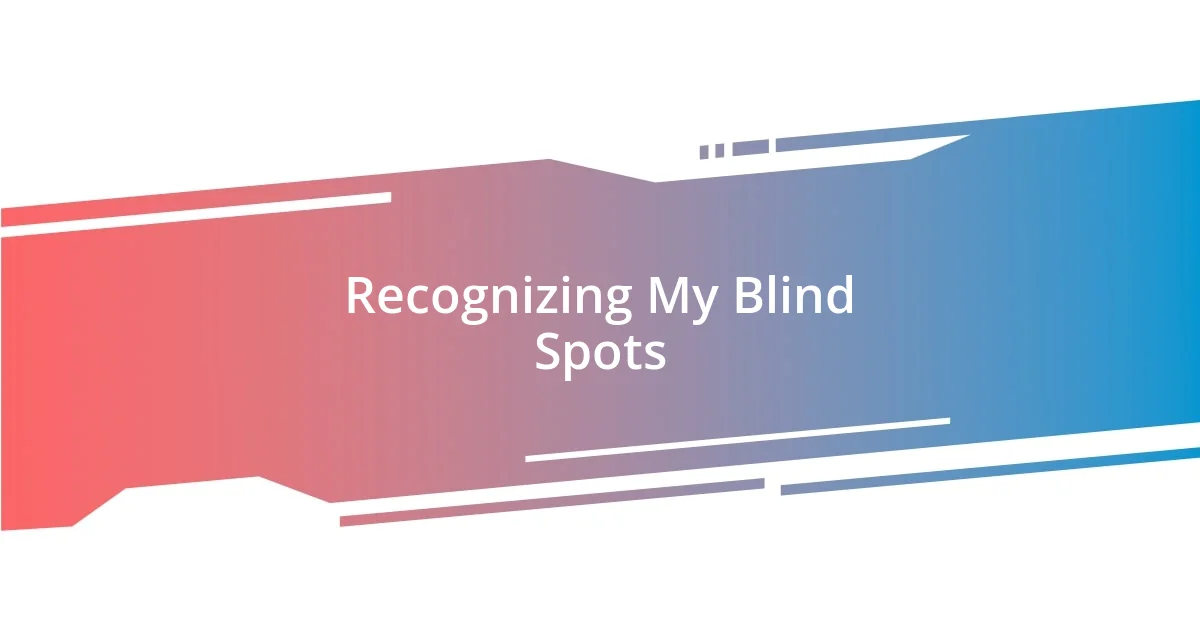
Recognizing My Blind Spots
Recognizing my blind spots was an eye-opening experience, one that revealed just how much I had unconsciously accepted societal narratives. I recall a time when I participated in a community workshop designed to foster understanding among different cultural groups. As I listened to the experiences shared by others, I felt a pang of discomfort. It hit me that I had been quick to categorize people without considering the nuances of their stories. I began to see that acknowledging my blind spots wasn’t just about awareness; it was about humility and a willingness to learn from the perspectives around me.
- Engaging in open conversations with diverse individuals helped illuminate my assumptions.
- Journaling my thoughts provided a safe space to confront uncomfortable truths about my views.
- Reflecting on past interactions revealed patterns where I had disregarded others’ experiences due to my biases.
- I discovered that vulnerability in these moments can lead to deeper connections and insights.
- Taking the time to read literature and articles outside my comfort zone broadened my understanding of different lived experiences.
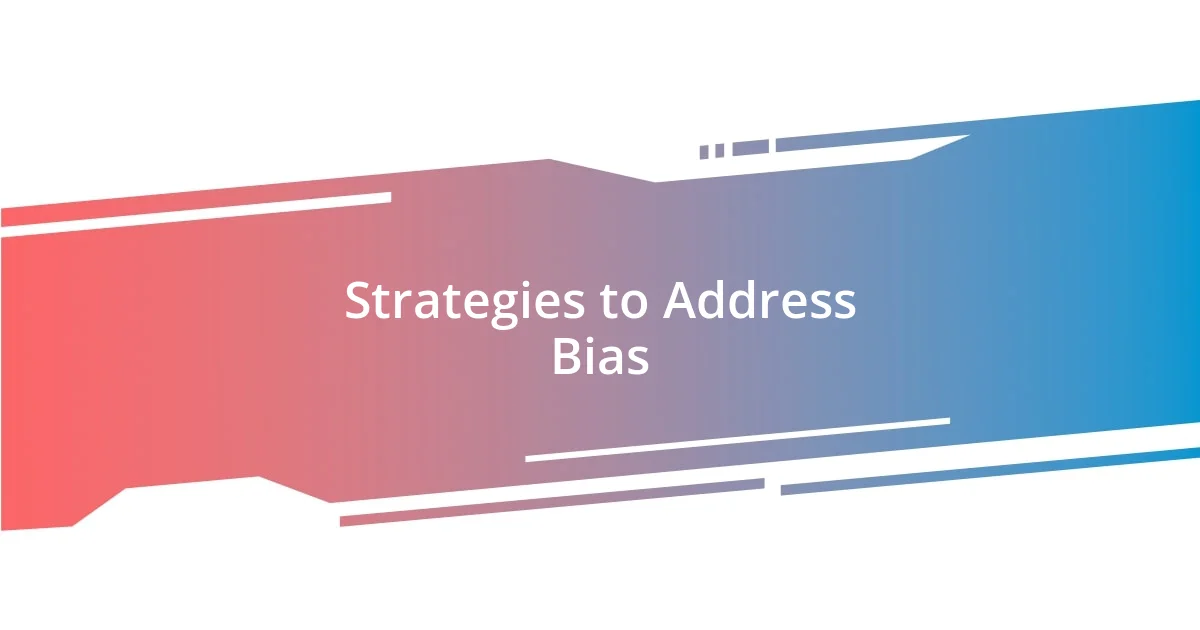
Strategies to Address Bias
One effective strategy I found helpful is seeking diverse perspectives. I remember attending a local cultural festival where I made it a point to engage with individuals whose backgrounds differed greatly from my own. Listening to their stories not only challenged my preconceived notions but also enriched my understanding of human experiences. It became clear that stepping outside my bubble is crucial to recognizing bias in my thought process.
Another strategy is the practice of self-reflection. I often set aside time each week to journal about any biases that surfaced during my interactions. This process of writing helps me confront uncomfortable feelings and examine my reactions. In doing so, I’ve noticed patterns in my behavior that I might otherwise overlook, allowing me to genuinely question my motives and reshape my viewpoints.
Additionally, educational resources play a significant role in confronting bias. I found that reading books authored by members of marginalized groups has expanded my understanding in profound ways. In one instance, a memoir I read opened my eyes to the struggles of individuals I had previously misunderstood. This realization reinforced the need to approach conversations with empathy rather than judgment, reminding me that everyone’s story is worth hearing.
| Strategy | Description |
|---|---|
| Diverse Perspectives | Engaging with individuals from different backgrounds to challenge assumptions and broaden understanding. |
| Self-Reflection | Regular journaling to examine biases and understand emotional responses to interactions. |
| Educational Resources | Reading literature from varied perspectives to enhance empathy and awareness. |
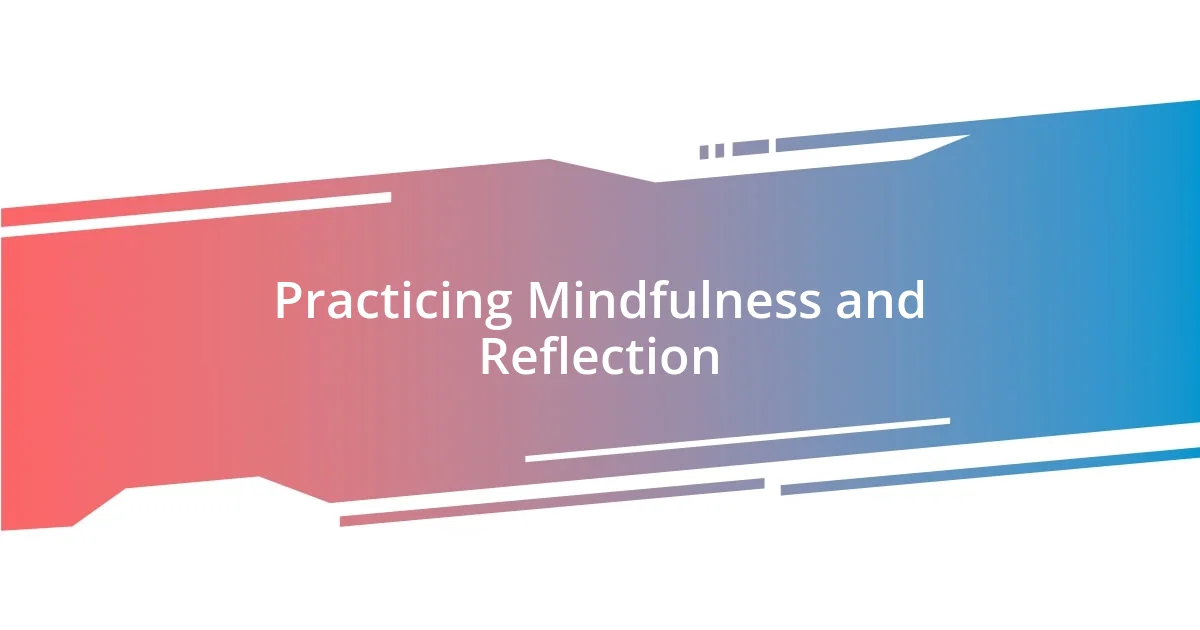
Practicing Mindfulness and Reflection
Practicing mindfulness in my daily life has profoundly impacted how I confront my biases. I remember one morning, sitting quietly with a cup of tea, and letting my mind wander through the previous day’s interactions. Instead of pushing aside feelings of discomfort from a conversation I had, I allowed myself to fully experience those emotions. It struck me—why do I feel this way? This question opened a door to deeper understanding and self-awareness.
Reflection is another crucial part of this journey. Not too long ago, I found myself jotting down moments where I felt my biases surfacing. One specific instance was during a meeting where I dismissed an idea simply because it didn’t align with my own beliefs. As I wrote, I felt a mixture of embarrassment and determination. Why had I silenced someone else’s perspective? Grappling with these feelings in my journal turned out to be a catalyst for change, helping me acknowledge my biases and commit to more inclusive behaviors.
I’ve discovered that letting my thoughts flow freely while journaling often reveals surprising insights. Have you ever noticed how certain themes emerge repeatedly? For instance, I realized that I tend to shy away from discussions when I feel challenged. This awareness wasn’t just enlightening—it was a call to action. It reminded me that true growth happens when I lean into discomfort rather than shy away. Embracing that discomfort, I began to see reflection not just as a task, but as an opportunity for genuine connection and understanding with others.
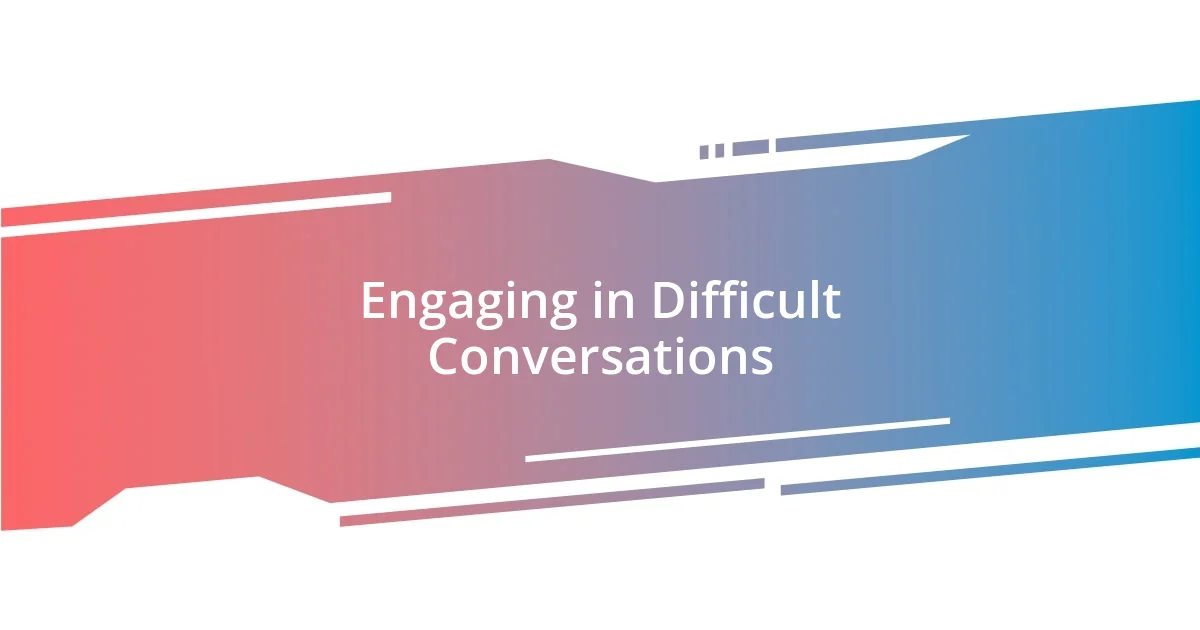
Engaging in Difficult Conversations
Engaging in difficult conversations has always been a challenge for me, and I believe that’s true for many people. I recall a time when I had to discuss a sensitive topic with a close friend. My heart raced, and I hesitated, thinking about how to share my feelings without hurting them. In that moment, I realized that honesty is the foundation of any meaningful dialogue, no matter how uncomfortable it may feel.
One evening, during a discussion about social issues, I found myself on the verge of misunderstanding my friend’s perspective. I sensed the tension rising and took a deep breath, asking an open-ended question instead of reacting defensively. “What led you to feel that way?” I wondered if this shift in approach would allow us to connect rather than clash. To my surprise, it opened the door to a rich exchange of thoughts, and I began to see the world through their eyes.
What strikes me as vital in these conversations is the emphasis on empathy. I often remind myself that the goal isn’t to “win” the dialogue but to understand. A few months back, I spoke with someone about racial issues—I was nervous but knew it mattered. By actively listening and acknowledging their feelings, I felt a bond form. That experience taught me that vulnerability can transform difficult conversations into moments of connection and growth, and I wouldn’t trade that for anything.
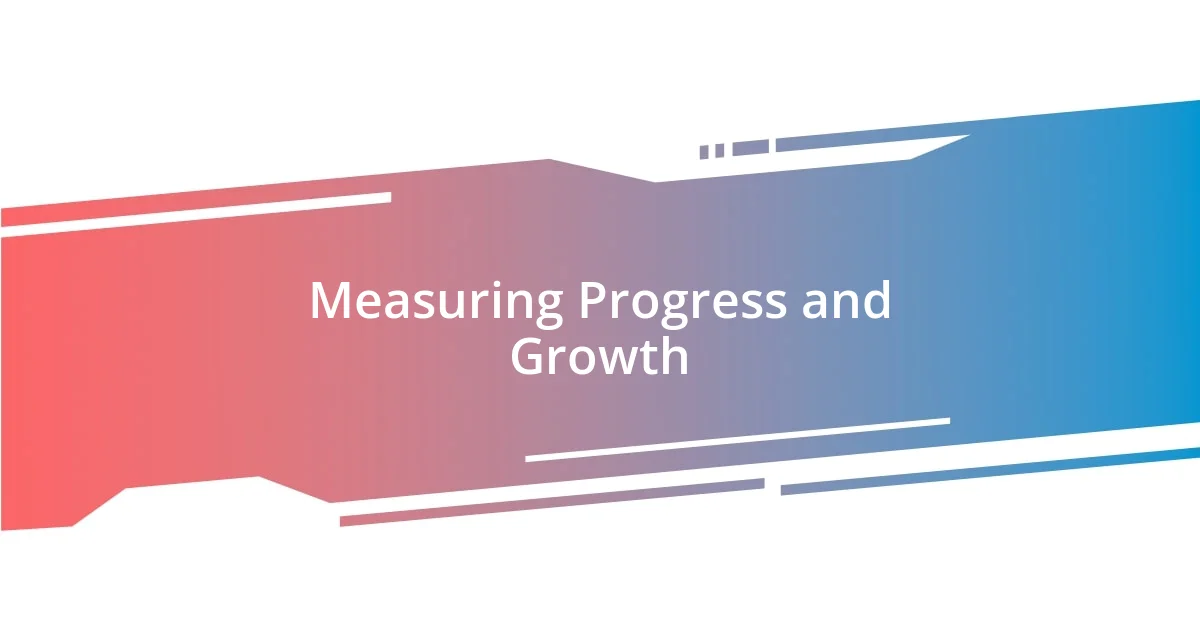
Measuring Progress and Growth
Measuring progress in confronting my biases has been a transformative journey, and journaling has been my trusty companion. I remember a moment when I decided to review my entries from the past month. It was like shining a light on the shadows of my thoughts. As I read through my reflections, I felt a mix of pride and surprise—did I really grow that much in just a few weeks? Recognizing patterns and noticing improvements in my reactions gave me a sense of accountability and motivation to keep pushing forward.
In another instance, I turned to my close friends for feedback on how I approach sensitive discussions. I asked them, point-blank, if they noticed any changes in my attitudes during our conversations. I recall the nervous flutter in my stomach as I awaited their responses. To my delight, they shared instances where I handled topics with more openness. Hearing them articulate my growth validated my efforts and provided a tangible way to measure my development. How often do we seek external perspectives to gauge our inner evolution? It made me realize that progress is often visible through the reflections of those around us.
Tracking my growth isn’t just about personal reflections; it’s also about recognizing the moments that challenge me to confront my biases. Recently, I found myself in a group discussion where differing opinions clashed. As I paused to consider my reaction, I remembered my commitment to remaining open-minded. Instead of defending my viewpoint, I leaned into the questions, asking what experiences shaped my peers’ beliefs. That shift in mindset felt monumental to me. Did I embrace growth in that moment? Absolutely. These experiences show that growth often happens in unforeseen moments, urging us to stay vigilant and responsive as we continue this important work.
